![]()
![]()
![]()
Use LEFT and RIGHT arrow keys to navigate between flashcards;
Use UP and DOWN arrow keys to flip the card;
H to show hint;
A reads text to speech;
14 Cards in this Set
- Front
- Back
- 3rd side (hint)
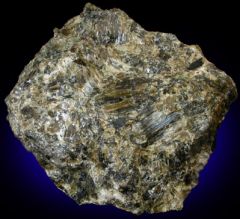
|
Enstatite - Mg2Si2O6 Orthorhombic HN: 5 SG: 3.5 Cleav: good Fract: uneven Luster: virtous
|
The pyroxene mineral enstatite takes its name from the Greek word enstates, which means “opponent”. A widespread mineral, enstatite forms a solid solution series with ferrosilite. The mineral usually occurs in magnesium- and iron- rich igneous rocks and in meteorites. |
|
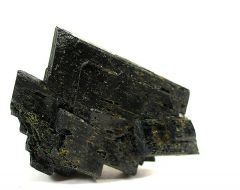
|
Augite - Ca,Na)(Mg,Fe,Ti,Al)(Al,Si)2O6 Monoclinic HN: 6 SG: 3.3 Clv: 2 direct, about right angle Fr: subconchoidal Lus: glassy to dull |
|
|
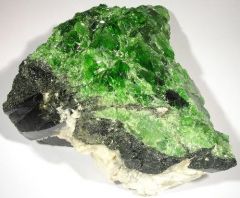
|
Diopside - CaMg(Si2O6)-Mono HN: 6 SG:3.3 Clv: 2 direct, right angle Frct: uneven Lus: glassy |
Most diopside is metamorphic and found in metamorphosed silica-rich limestones . Diopside occurs in the form of equant |
|
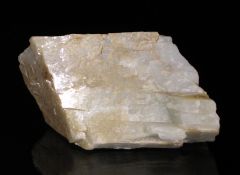
|
Spodumene - LiAl(Si2O6) Monoclinic HN: 7 SG: 3 Clv: perfect Frct: subconchoidal splintery Lus: glassy |
Spodumene is an important ore of lithium. It occurs in lithium-bearing granite pegmatite dykes, often with other lithium-bearing minerals, such as eucryptite and lepidolite |
|
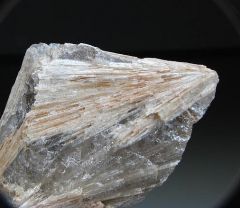
|
Wollastonite - CaSiO3 Triclinic HN: 5 SG: 2.9 Clv: perfect Frct: splintery Lus: glassy to silky |
Wollastonite forms as a result of the contact |
|
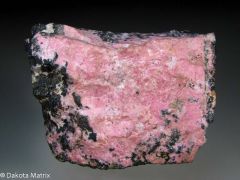
|
Rhodonite - (Mn,Ca)5(Si5O15) Triclinic HN: 6 SG: 3.5 Clv: perfect Frct:Conchoidal Lus: glassy |
Rhodonite is found in various manganese ores, often with rhodochrosite or as a product of rhodochrosite that has undergone metamorphism |
|

|
Tremolite - Monoclinic HN: 5- 6 SG: 3 Cleav: perfect Fract: splintery Luster: glassy to silky |
the mineral is abundant and widespread. It is the product of both thermal and regional metamorphism and is an indicator of metamorphic grade because it converts to diopside at high temperatures (1,065°F/575°C or above |
|
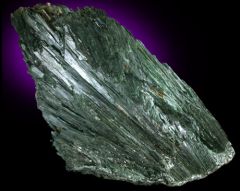
|
Actinolite - Monoclinic HN: 5 - 6 SG: 3 Cleav: good cross at 56-124 Fract: splintery Luster: glassy to silky |
Actinolite is an amphibole mineral and forms as a product of low- to medium-grade thermal and regional metamorphism. Good crystals come from Edwards, New York, USA, and Kantiwa, Afghanistan. |
|
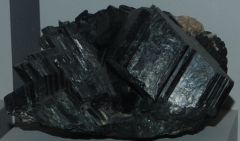
|
Hornblende - Monoclinic HN: 5 - 6 SG: 3.3 Cleav: perfect Fract: brittle Luster: glassy |
Specimens are green, dark green, or brownish green to black in color. Hornblende crystals are usually bladed and unterminated, and they often show a pseudohexagonal cross section. |
|
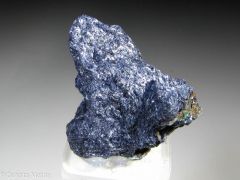
|
Glaucophane - Monoclinic HN: 6 SG: 3.2 Cleav: Distinct Fract: conchoidal Luster:glassy to pearly |
Glaucophane occurs in schists formed by high-pressure metamorphism of sodium-rich sediments at low temperatures (up to 400°F/200°C) or by the introduction of sodium into the process. |
|
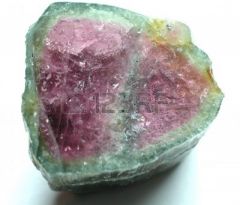
|
Tourmaline - FeWO4 Hexagonal HN: 7 SG: 3 Cleav: indistinct Fract: conchoidal Luster: glassy |
Tourmaline is abundant, and its best formed crystals are usually found in pegmatites and |
|
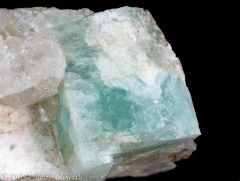
|
Beryl - MnWO4 Hexagonal HN: 8 SG: 2.8 Cleav: indistinct Fract: conchoidal Luster: glassy |
Most beryl is found in granites , granite |
|
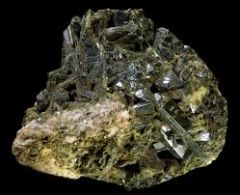
|
Epidote - Mono HN: 6 - 7 SG: 3.4 Cleav: good Fract: splintery Luster: glassy |
Epidote is found in low-grade, regionally metamorphosed rocks. It also occurs as a product of the alteration of plagioclase feldspars |
|

|
Vesuvianite-Mono/Tert HN: 6.5 SG: 3.4 Cleav: poor Fract: subconchoidal, brittle Luster: glassy |
Elements such as tin, lead, manganese, chromium, zinc, and sulfur may substitute in the vesuvianite structure. The mineral is formed by the metamorphism of impure limestones |

